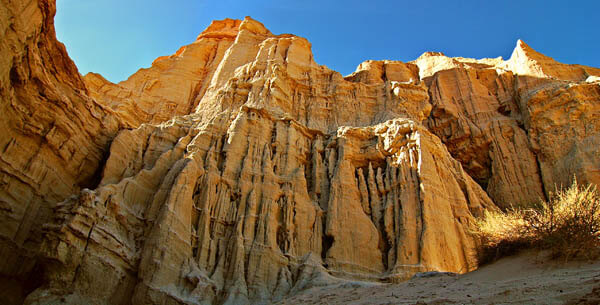
Mother Nature was surely in a good mood when she created Red Rock Canyon. Now part of Red Rock Canyon State Park, the spectacular cliffs and buttes that make up the canyon were actually created over thousands of years of time, as rain and wind wore down layers of ancient soft lava to expose colorful red, pink, brown, and grey formations of harder stone, creating an impressionistic landscape that has few equals.
If you and your family are looking to explore one of nature’s classrooms, you’ll find a wealth of material available for you at Red Rock Canyon. The area has a rich cultural history, serving as home for the Kawaiisu Indians (who left petroglyphs in the neighboring El Paso Mountains) and as a resting stop for wagon trains and other wayfarers. If you’re more interested in science, Red Rock Canyon offers brilliant opportunities to explore dessert flora and fauna, and amateur geologists will be entranced by the rock formations that give the canyon its name.
Although Red Rock Canyon makes for an excellent day trip, you may want to consider a camping excursion. There are developed sites at Ricardo Campground, from which the cliffs are easily visible. There’s a visitor center there that you’ll want to visit as well. Campsites are $25 per night, with potable water, pit toilets, tables, and fire rings. You’ll need to bring in your own firewood, though, and please note that there are no RV hook-ups or shower facilities.
If you’d prefer a more refined experience, you’ll find motels in the nearby towns of Mojave and Ridgecrest. If you’re an equestrian, horseback riding is allowed in the park, but horses may not stay overnight in the camping area. Dress for variable weather–it can drop below freezing at night and rise into the triple digits during the day. We’d recommend that you plan a visit to this spectacular display of nature in the spring or fall.
Red Rock Canyon State Park is open 24 hours a day year round, with a $6.00 admission fee per car for day use. You can reach Red Rock Canyon northeast of Mojave on Highway 14. It’s about 120 miles north of Los Angeles.
Photo by Jim Staley on flickr
You should follow me on twitter here.
There's all the rest of southern California to explore!
Jack on 28 August, 2012